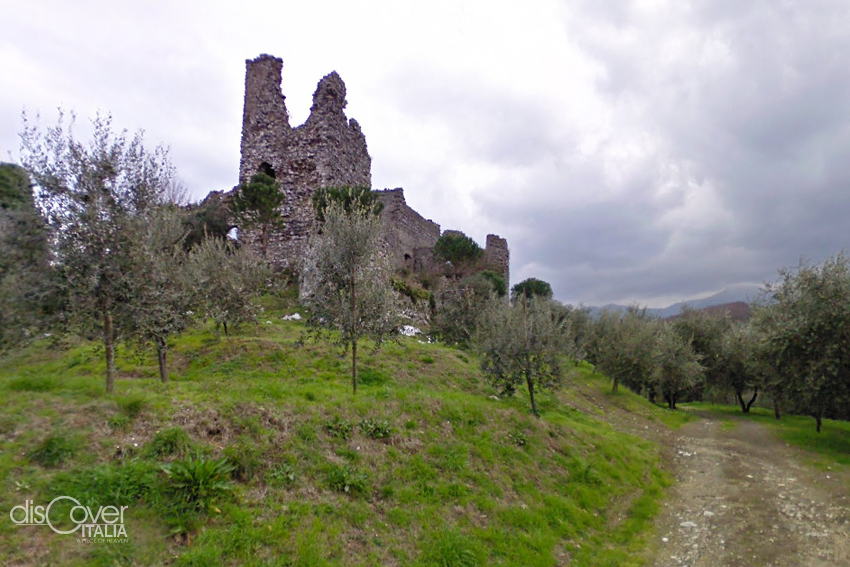Walking around Avellino
On piazza Amendola where the tower stands, there was already at the beginning of the year 1000 a public edifice, where the intense commercial traffic of the city was managed. The Palace of the Dogana housed the goods exchange and the most important city fairs, on the occasion of the anniversaries in honor of the Madonna Assunta and the patron saint San Modestino, as well as being used for the Tuesday and Saturday market. In the context of the important interventions launched by Prince Marino I Caracciolo to restore and embellish Avellino, a Baroque restyling of the building was planned by Cosimo Fanzago. Therefore, the palace got a new appearance in 1657, when it was equipped with a façade in which lunettes and niches appeared in order to house the statues of the Roman emperors, a statue of Venus Anadyomene and one of Prince Marino Caracciolo, with the emblems. Other statues came from the ancient Abellinum. Acquired in the Twentieth century by private individuals and converted into a cinematographic room, after the damage caused by the 1980 earthquake, a fire destroyed it, leaving only the façade and part of the perimeter walls, mute testimony of the splendor that it was.
In the square, in front of the Dogana, there is the Obelisk to Charles II of Habsburg, another work signed by Cosimo Fanzago, under request of the University (the Town Hall of that time) of Avellino in 1688. A tribute to sovereign who ascended the throne as a child, who is portrayed in the bronze statue on the top of the spire. And due to the fact that Charles is represented at the age he was (seven years old) when the work was built, Avellino people renamed him “reuccio di bronzo” (“the bronze little king”). Under the obelisk, there is a tondo with the portrait of Fanzago. Both the statue and the tondo, together with other parts of the monument like the bronze rosettes at the base of the spire, were saved from the earthquake of 1732, then the work was reassembled and moved, in order to be then relocated in the square.
Fontana Caracciolo and above all, for the Avellino people, Fontana dei tre cannuoli… The Fountain of Bellerofonte is know by different names, easily accessible from piazza della Torre. From the seventeenth century, there were several statues adorning it in the original version, some coming from the excavations of the ancient Abellinum. Many got lost because of the various earthquakes that happened over the centuries. But among what is remaining, there are still ancient inscriptions and the emblem of the Caracciolo family.
In front of the historic fountain, on the ancient via Regia delle Puglie, which from the time of Charles III of Bourbon connected Campania and Puglia passing also by Avellino, there is the Church of Santa Maria di Costantinopoli. The sixteenth-century complex of the church of San Generoso and the nearby convent overlooks via delle Puglie. Also on Strada Regia delle Puglie, the church of San Giovanni Battista with the Monastery of Santa Maria di Monserrat is worth a visit.
In Piazza Duomo, in addition to the mother church of the city and of the Diocese, you can see the confraternity of the Immaculate Conception. Nearby the Cathedral, there is also the church of Holy Trinity.
In the Rione Terra, behind the Cathedral, at the end of the Seventeenth century, the architect Luigi Maria de Conciliis built on a family land the De Conciliis Palace, better known to the Avellino people as Victor Hugo’s Palace. In what he remembered as a “palais de marbre”, a marble palace, between 1807 and 1808, in the middle of the French decade, the future great novelist lived when he was only eight years old, who reached Avellino with is family following his father Joseph Léopold Sigisbert, governor of the city.
Once you have reached corso Umberto I, a must-see is the Casina del Principe, which gave access to the wonderful park of the Castle, among the splendors of the city, a sought-after hunting reserve for the nobles who came to Avellino as guests of the Caracciolo family. Nearby stood the Castle of which only the ruins remain. And in Piazza Castello there is the Carlo Gesulado Theatre.
Among Avellino churches, the Church of San Francesco Saverio presents reasons of interests. The church is also called Santa Rita for the statue of the Saint. The altarpiece by Fedele Fischetti above the altar is from 1767 is valuable. In Piazza del Popolo, the Church of Santa Maria del Rifugio or church of Sant’Anna dates back to the early Eighteenth century and houses a painting of the Virgin Mary with Purging Souls which has never been damaged by seismic events nor by the bombs of the last world war. On the hill of the Cappuccini, the Sanctuary of Santa Maria delle Grazie stands, with the convent from 1580 and the church from four years later, which keep various art works such as the Deposition by Silvestro Buono from 1551 with a portrait of the client of the noble Spadafora family. In the district of Ferrovia, the modern church of San Francesco d’Assisi stands out for a famous mural about peace. Of great importance to the city’s history, the Convent of the Cappuccini has various art works inside and a courtyard adorned with a characteristic well and terracotta lunettes. And the Church of Perpetual Adoration, with a single nave, shows a beautiful painted wooden ceiling and a canvas by Ricciardi.
Going back, after having passed the Duomo and the Tower, you reach piazza della Libertà, formerly largo dei Tribunali, with its fountains: the Seventeenth-century one from Constantinople and the other one, baroque as well, of Sant’Antonio Abate, which overlooks the Episcopal Palace. But the Eighteenth-century Caracciolo's Palace occupies majestically an entire side of the square. It has been totally restored and is the current seat of the Province.
From piazza della Libertà, the corso Vittorio Emanuele starts, the main road of the city. Along the street, the church of the Holy Rosary stands out with its gothic façade. In the immediate vicinity, few meters form the tribunal, there is the Bourbon prison, which houses the main museum complex of Avellino, with the Irpinia Museum of the Risorgimento, the Provincial Art Gallery, the Lapidarium, some gardens, an auditorium and educational spaces. The Villa Comunale is in the same area, behind which another section of the Irpinia Museum is located.
From the Villa Comunale is it possible to reach the ancient village of Sant’Antonio Abate on the Fenestrelle river. There, you can see the Tecta fountain, from the 12th century, from which the inhabitants of the neighborhood and those who traveled the Strada Salernitana went to draw water. It is also known as Grimoaldo fountain from the name of the nobleman who took care of its embellishment. In the Nineteenth century, the two wash houses which were created were used to wash the clothes of the neighborhood’s women.














Comments powered by CComment